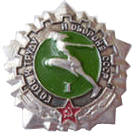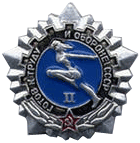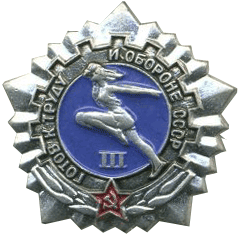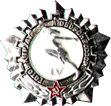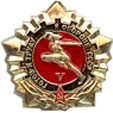Sports category badges, attribute the USSR
Badge GENE, badge BGTO
|
|
|
|
|
|
Badge Ready to labour and defence USSR 1 degree |
Badge Ready to labour and defence USSR 1 degrees |
Badge Ready to labour and defence USSR 2 degrees |
Badge Ready to labour and defence USSR 3 degrees |
Badge Ready to labour and defence USSR 4 degrees |
Badge Ready to labour and defence USSR 5 degrees |
 |
 |
 |
 |
 |
|
Badge BGTO 3 degrees |
Badge 2 categories on run |
Badge GTO 1 category |
Badge Juvenile 3 categories |
The Badge Chess 1 sports category |
Badge atheletic GTO
High place in the collections of many badges Union faleristov take physical training complex "Ready for Labor and Defense" (GTO). As you know, the initiator of the complex TRP was the Komsomol. For the first time the complex was put into effect in 1931, introduced in 1932, Level II, and in 1934 - BGTO stage ("Get ready for Labor and Defense") for students.
Born during the First Five-Year Plan, the complex TRP organically into the lives of several generations of Soviet people and instill in them a love for physical education. For some time the complex several times changed its regulations accordingly changed its pattern and shape of the badge, but it remained unchanged essence of the life-affirming, as expressed in the words: "speed, agility, courage, and mutual assistance.
In addition to standard set of badges, there are many other on various TRP competition. And there is no shortage of collectors in the materials. Their meetings are replenished every year. Speaking of sports faleristics, we can not say about the new big section of collectibles. It will focus on the Olympic badge. Debuting in 1952 at the XV Olympic Games in Helsinki, Soviet athletes have opened a new chapter in the history of national sport, 22 gold, 30 silver and 19 bronze medals - this is the result of "newcomers" of the Olympics.
Leaving for my first Olympics in Helsinki, the Soviet team had not yet had enough experience that the other participating countries. This impact is primarily on the badge. The current tradition obliges member country to supply its Olympic team to the Olympic emblem badges - five intertwined rings. The team arrived in Helsinki without a badge. Rather, the Soviet team was an badge, but it was not an Olympic logo. This badge is a red flag with a five-pointed star with hammer and sickle in the upper left corner. In fact, the badge represented the national flag of the Soviet Union. We know two kinds of such an badge - the larger and smaller sizes.

